Selecting optimal connection equipment for climbing requires understanding quickdraw design specifics. As webbing manufacturers serving the climbing industry worldwide, we’ve tested how different quickdraw configurations perform across disciplines—from indoor sport routes to exposed alpine environments.
Quickdraw slings are specialized climbing connectors consisting of two carabiners joined by webbing (10-25cm long). This critical link connects a climber’s rope to anchors or protection. Sport versions feature rigid dogbones for efficient clipping, while traditional and alpine models use longer, flexible webbing to minimize rope drag on complex routes.
We’ll cover material options, performance trade-offs, and manufacturing factors that influence safety and durability—helping you design effective quickdraws for any climbing style.
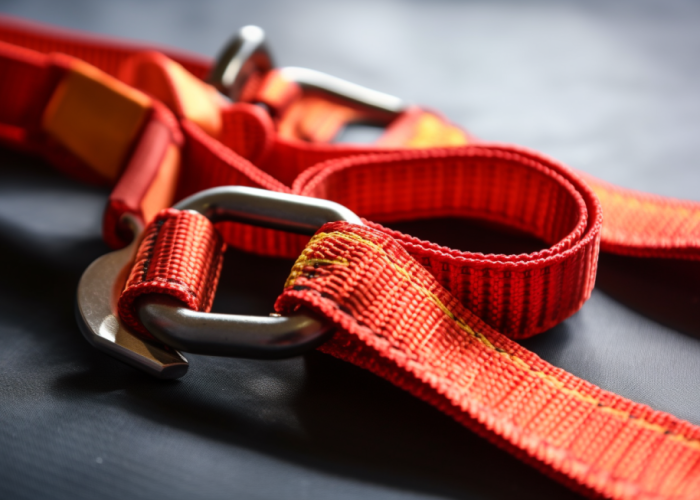

Webbing manufacturing expert with 15+ years of experience helping product developers build high-performance straps for industrial, medical, and outdoor use.
A quickdraw sling consists of three essential components: two carabiners and a connecting webbing piece called a dogbone. The top carabiner attaches to protection (bolts or gear), featuring a solid gate for durability, while the bottom carabiner holds the climbing rope and typically uses a wire gate for lighter weight and reduced gate flutter. Standard quickdraws range from 10-25cm in length, with specialized alpine versions extending to 60cm.
The protection-side carabiner requires maximum durability to withstand abrasion against rock and metal anchors. These typically feature solid gates with straight designs for secure attachment. Rope-side carabiners often incorporate bent gates for easier rope clipping and may include features like wire gates that reduce overall weight and minimize dangerous gate flutter during falls.
The connecting webbing (dogbone) varies significantly based on intended use. Sport climbing dogbones feature rigid, reinforced designs (12-17mm wide) that maintain shape for fast clipping during challenging moves. In contrast, traditional climbing dogbones offer more flexibility, sometimes using tubular webbing or specialized tape that balances durability with weight considerations. The attachment method—whether sewn loops, bartacked connections, or rubber stabilizers—significantly impacts performance and safety.
Modern quickdraws often incorporate additional elements that enhance functionality. Rubber stabilizers prevent carabiner rotation, ensuring proper orientation during critical moments. Anti-cross loading features protect against dangerous sideways loading of carabiners. Material indicators (color coding or labeled stitching) help identify different webbing compositions, while wear indicators signal when replacement is necessary for safety-critical equipment.
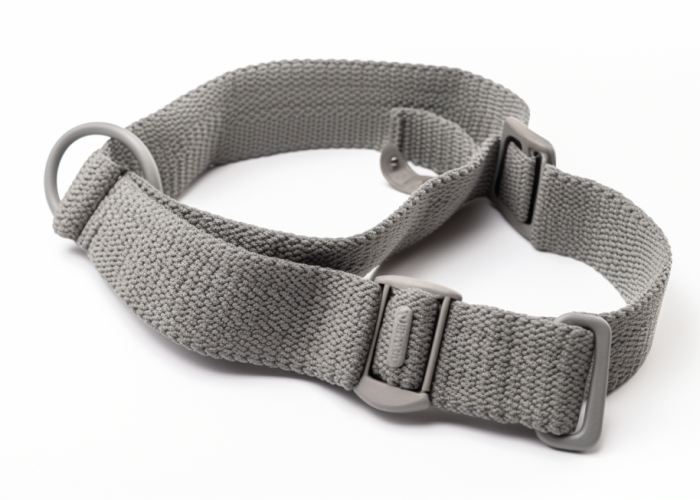
Sport climbing requires short (10-12cm), rigid quickdraws with bent-gate carabiners that maintain shape for fast clipping. Traditional climbing needs medium-length (12-18cm) draws with flexible dogbones to work with varied protection placements. Alpine and multi-pitch routes demand lightweight, extendable quickdraws (20-60cm) that reduce rope drag on wandering paths and can adapt through tripling techniques.
Sport climbing quickdraws prioritize efficiency during high-intensity movements. These models feature rigid dogbones that maintain shape for instant clipping when a climber has only seconds to secure protection. The bottom carabiners typically include bent gates and keylock designs to prevent snagging, while the compact size (10-12cm) keeps the climber closer to the wall for maximum leverage. High-traffic sport routes benefit from more durable polyester webbing that withstands repeated falls and abrasion against rough rock surfaces.
Traditional climbing involves placing removable protection in natural rock features, demanding more versatile quickdraws. These models incorporate slightly longer designs (12-18cm) with increased flexibility to accommodate irregular protection placements. The dogbones often feature less rigid construction to conform around gear without compromising stability. Weight becomes a significant factor as traditional climbers carry substantially more equipment, making nylon and lightweight composites popular choices despite marginal decreases in absolute strength compared to polyester alternatives.
Alpine climbing presents unique challenges requiring specialized quickdraw configurations. Alpine quickdraws, often called “alpine draws,” utilize longer slings (30-60cm) that can be extended to reduce rope drag on wandering routes or shortened via strategic tripling techniques when necessary. These designs frequently incorporate ultralight materials like Dyneema/Spectra with minimal stretch properties to maintain rope positioning across long pitches. The extreme environmental conditions of alpine environments demand materials with superior UV resistance and minimal water absorption for consistent performance in variable conditions.
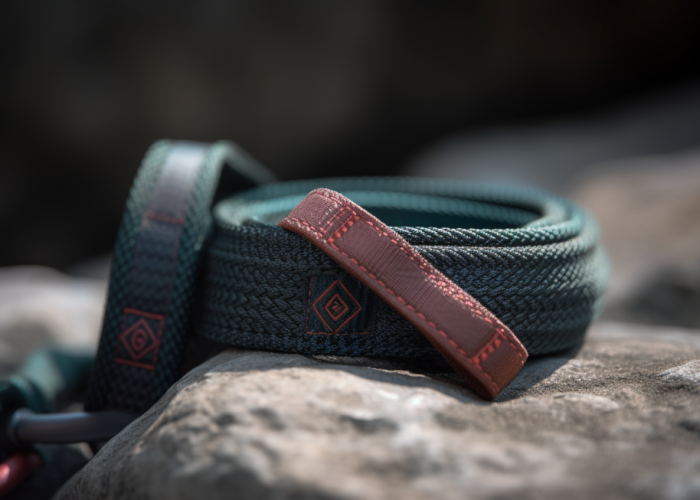
Four primary materials dominate quickdraw construction: polyester, nylon, Dyneema/Spectra (HMPE), and aramid. Polyester offers superior UV resistance and maintains 95% strength when wet. Nylon provides excellent elastic properties (20-30% stretch) and overall durability. Dyneema delivers an unmatched strength-to-weight ratio (10-15x stronger than steel) with minimal stretch (<1%). Aramid compounds excel in specialized high-heat environments but are rarely used in standard quickdraws.
Polyester dominates sport climbing applications due to its exceptional balance of durability and performance. Its minimal water absorption (0.4%) prevents strength degradation in wet conditions, maintaining 95% of tensile strength when saturated. The material’s superior UV resistance makes it ideal for fixed equipment on outdoor routes that face constant sun exposure. With a strength-to-weight ratio approximately 70-80% that of nylon, polyester’s moderate elongation (maximum 15%) offers sufficient dynamic properties while maintaining predictable handling characteristics for consistent clipping.
Nylon’s excellent elasticity (20-30% stretch) makes it valuable for traditional climbing applications where dynamic force absorption enhances protection integrity. Its higher tensile strength compared to polyester (approximately 7-9 kg/mm²) provides maximum security for critical placements. However, nylon’s significant water absorption (4-7%) and moderate UV sensitivity require careful consideration for expeditions in challenging environments. The material’s superior abrasion resistance makes it appropriate for rugged applications where repeated contact with rough surfaces occurs.
Ultra-high-molecular-weight polyethylene (Dyneema/Spectra/HMPE) represents the premium material choice for alpine climbing where weight reduction is paramount. Its remarkable strength-to-weight ratio (10-15x stronger than steel) combined with minimal water absorption (0%) and negligible stretch (<1%) creates ideal properties for extended routes. The material’s slippery texture reduces friction with rock and rope systems, decreasing drag across long pitches. However, its low melting point (approximately 140°C) creates potential failures during rapid descents where friction heat builds, requiring careful application in quickdraw design.
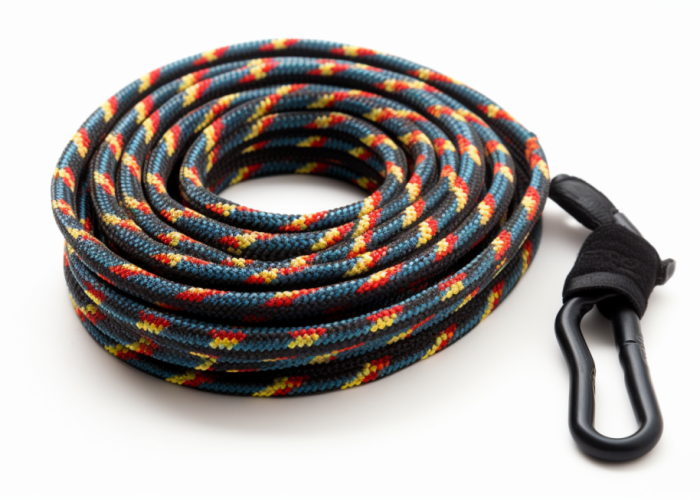
Polyester provides superior UV resistance (90% strength retention after exposure) and minimal water absorption (0.4%) at moderate strength-to-weight ratios. Nylon delivers excellent elongation (20-30%) and abrasion resistance but absorbs significant moisture (4-7%). Dyneema offers the highest strength-to-weight ratio (10-15x stronger than steel) with zero water absorption but poor heat resistance (140°C melting point) and minimal stretch (<1%).
The strength-to-weight ratio directly impacts quickdraw performance and climber fatigue. Standard polyester dogbones typically achieve 22-24kN breaking strength at 12-14g per 10cm length. Comparable nylon constructions offer similar breaking strength (23-25kN) but at slightly higher weights (15-17g). Dyneema-based dogbones provide remarkable strength (25-28kN) while reducing weight by 30-40% (8-10g). This weight difference becomes significant on alpine routes where climbers might carry 15-20 quickdraws, resulting in several hundred grams of difference across a full rack.
Environmental factors dramatically affect material performance over time. Laboratory testing shows polyester retains 90% strength after 500 hours of UV exposure, compared to nylon’s 75% retention under identical conditions. When saturated, nylon loses 10-15% tensile strength while polyester maintains 95% of dry strength. Temperature extremes affect each material differently—Dyneema performs exceptionally in cold environments but risks structural failure above 80°C sustained temperature. Aramid compounds maintain integrity in high-heat scenarios (resistant to 500°C) but suffer accelerated degradation from UV exposure, limiting their application in standard climbing equipment.
Manufacturing considerations directly impact product positioning and market viability. Polyester quickdraws typically cost 15-20% less to produce than comparable nylon versions due to raw material pricing and processing requirements. Dyneema-based products command premium pricing (50-70% higher than polyester) reflected in specialized application markets. Production complexity increases with hybrid constructions that combine materials to optimize performance characteristics, requiring specialized machinery and quality control protocols. Sewn terminations demand different approaches for each material—polyester and nylon accept standard bar-tacking while Dyneema requires specialized techniques to prevent slippage at connection points.
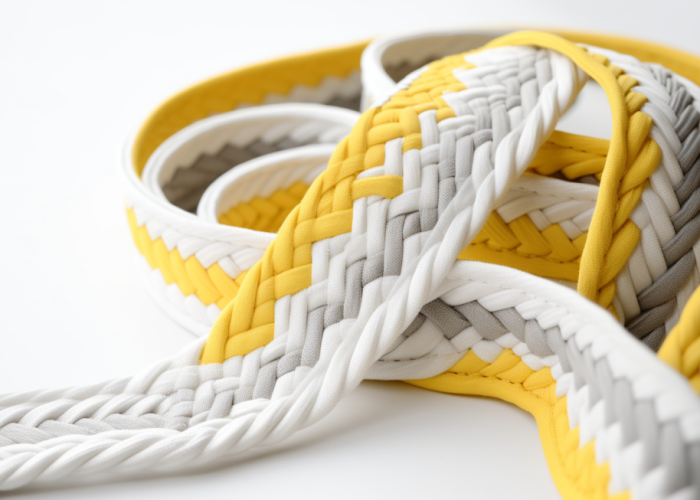
Effective quickdraw design balances five critical factors: material selection, carabiner design, sling specifications, construction quality, and safety certifications. Sport climbing requires durable nylon slings (10-12cm) with solid gate carabiners for strength and positive handling. Traditional and alpine climbing demands lightweight Dyneema slings with wire gates to minimize weight. All quality designs incorporate keylock systems to prevent snagging and maintain proper gate orientation during climbing.
Material choice fundamentally determines quickdraw performance characteristics. Nylon webbing offers superior durability and handling comfort, making it the preferred material for sport climbing applications where repeated use on high-traffic routes demands resilience. Dyneema stands out for alpine and traditional climbing scenarios due to its exceptional strength-to-weight ratio and water resistance. The webbing material directly influences how the quickdraw handles during clipping—nylon provides natural rigidity for positive handling, while Dyneema requires additional manufacturing techniques to achieve similar handling properties.
Carabiner design critically affects quickdraw functionality across climbing disciplines. Gate action smoothness determines clipping efficiency during critical moments—quality designs require minimal force for operation while preventing accidental opening. Keylock nose designs eliminate snagging points on bolt hangers, gear placements, and harness loops, creating seamless transitions during both clipping and unclipping. I-beam construction techniques reduce overall weight without compromising structural integrity, particularly valuable for traditional and alpine applications where every gram matters across a full rack of equipment.
Manufacturing quality directly impacts safety and longevity in climbing environments. High-quality stitching patterns distribute forces evenly across the webbing, preventing catastrophic failures under dynamic loading. UIAA/CE certification ensures compliance with rigorous international safety standards, providing verification of minimum strength requirements and quality control processes. Ergonomic design elements—from dogbone width to carabiner shape—enhance handling during intense climbing situations where efficient clipping can mean the difference between a successful ascent and a dangerous fall. Custom manufacturing allows optimization of these elements for specific climbing disciplines and environments.
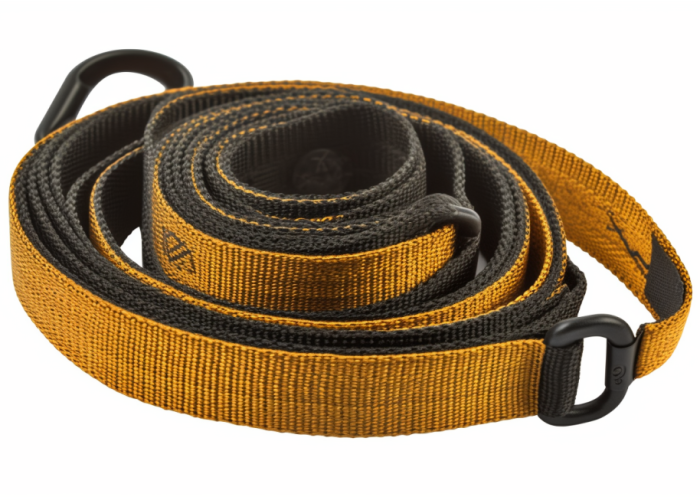
Manufacturing quality quickdraws requires attention to material selection, dimensions, design features, and discipline-specific needs. Nylon provides durability for sport climbing, Dyneema delivers lightweight strength for trad/alpine use, and polyester offers UV resistance. Proper manufacturing balances material properties, dimensional specifications, and performance features to meet the 22kN minimum strength standards while optimizing for specific climbing applications.
Material choice defines performance characteristics across climbing disciplines. Nylon excels in sport applications with superior durability and handling comfort. Dyneema dominates traditional/alpine scenarios with exceptional strength-to-weight ratio and water resistance. Aluminum carabiners processed through hot forging create optimal balance between weight reduction and structural integrity, essential for specialized applications where every gram matters during long routes.
Short slings (10-12cm) serve sport climbing’s direct movements by minimizing bulk. Longer options (20-30cm) reduce rope drag on wandering traditional routes. Webbing width varies by application—wider nylon (16-25mm) provides enhanced grip for sport climbing, while narrow Dyneema (11mm) significantly reduces weight for alpine scenarios. Gate opening dimensions balance ease of use against accidental opening prevention, with larger openings (23 mm+) offering easier clipping but increased weight.
Rubber keepers prevent carabiner rotation and cross-loading during falls. Gate design influences both security and efficiency—straight gates for protection-side stability, bent/wire gates for rope-side clipping ease. Ergonomic elements enhance handling during critical moments, with smooth gate action directly impacting clipping performance on challenging routes. Quality manufacturing processes ensure consistent performance across production batches while meeting UIAA/CE certification requirements.
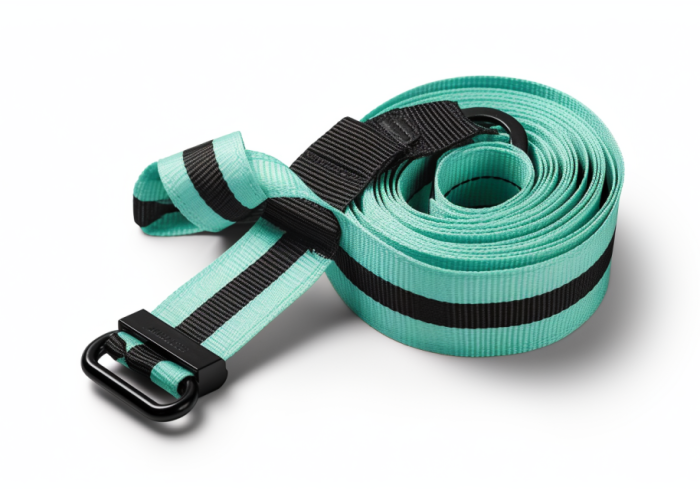
Effective quickdraw manufacturing balances material properties, dimensional specifications, and discipline-specific features to create reliable climbing equipment. By selecting optimal materials, implementing proper production techniques, and understanding climber needs across sport, traditional, and alpine disciplines, manufacturers can deliver quickdraws that enhance safety, performance, and user confidence.
Quickdraw slings typically last 3-5 years with regular use, though this varies by material and conditions. Nylon slings in high-UV environments may need replacement after 2-3 years, while Dyneema can maintain strength longer but should be inspected regularly for surface damage. Always retire quickdraws after significant falls or visible wear.
UV radiation degrades nylon more rapidly than Dyneema, with nylon losing up to 25% strength after extended exposure compared to Dyneema’s superior resistance. However, Dyneema performs poorly in high heat, with a low melting point (140°C) that creates risk during rapid rappels, while nylon maintains structural integrity at much higher temperatures.
Quickdraws must meet UIAA and CE certification standards, requiring minimum breaking strength of 22kN, specific manufacturing consistency, and quality control testing. Certification involves batch testing, dynamic load evaluation, and verified tracking systems that document production. These standards ensure quickdraws perform reliably under climbing stresses.
Gate type directly impacts performance: wire gates reduce weight by 20-30% and minimize gate flutter during falls but may offer less durability. Bent gates enhance rope-side clipping efficiency during difficult moves. Straight gates provide maximum durability for anchor connections. Keylock nose designs prevent snagging on bolt hangers and gear.
Rigid dogbones maintain shape during challenging clips, making them ideal for sport climbing where quick, one-handed clipping is essential. Flexible dogbones conform better to irregular anchor placements in traditional climbing and pack more compactly. Rigid designs typically weigh slightly more but offer enhanced handling during high-stress climbing scenarios.
Custom quickdraws allow specification of exact material combinations, dimensional requirements, and specialized features beyond standard production options. Custom manufacturing enables optimization for specific climbing environments, incorporation of proprietary technologies, and specialized color coding for rack organization. Custom production typically requires minimum order quantities but delivers precisely tailored performance characteristics.